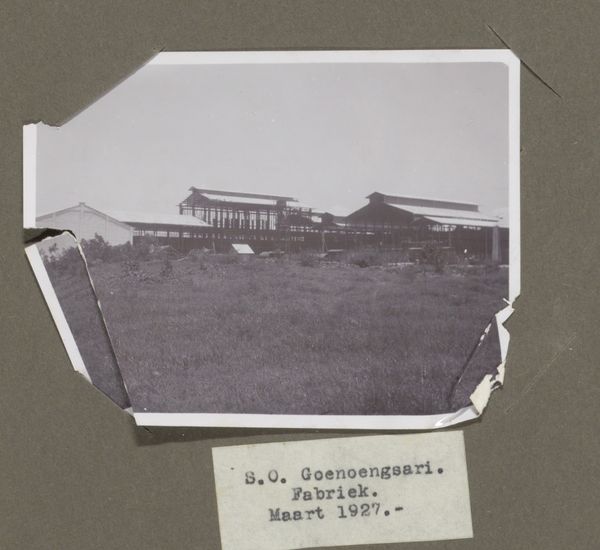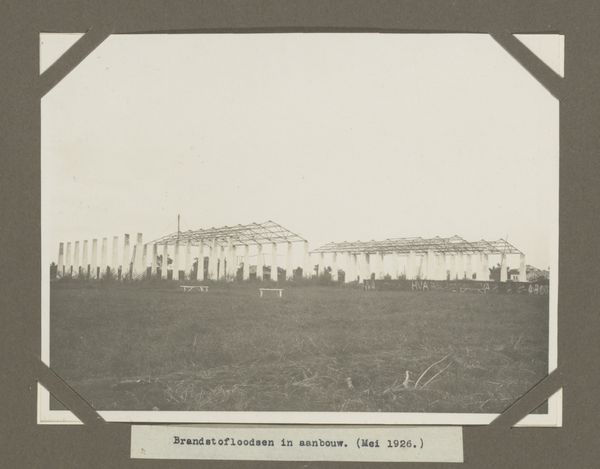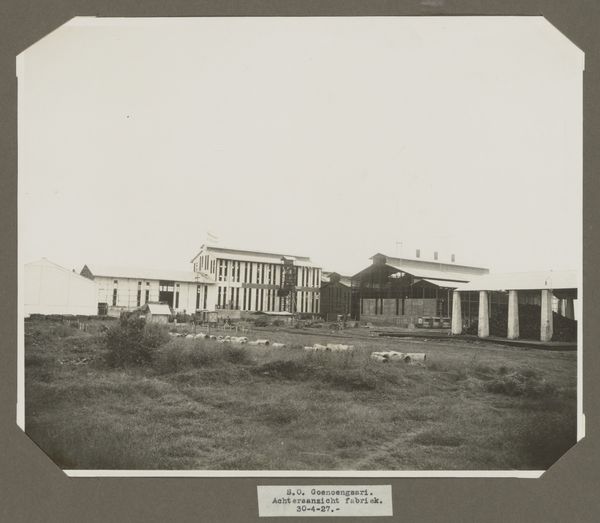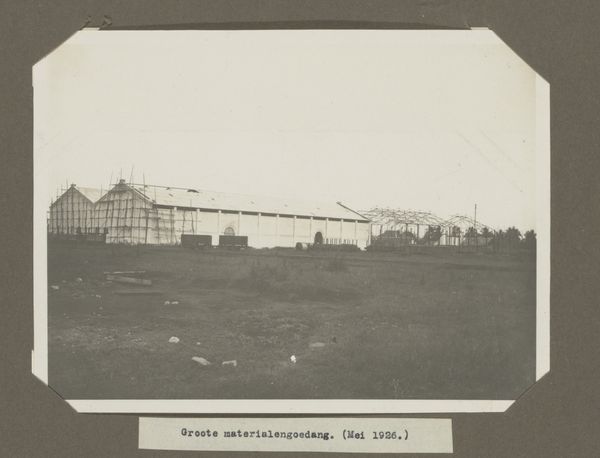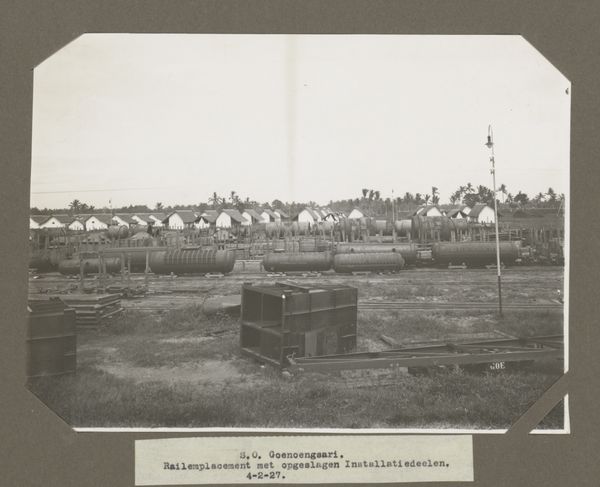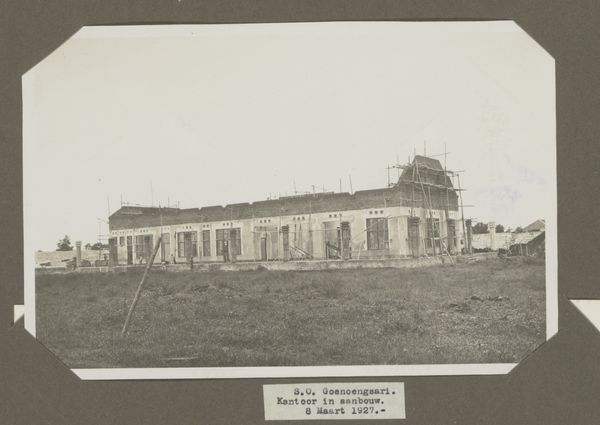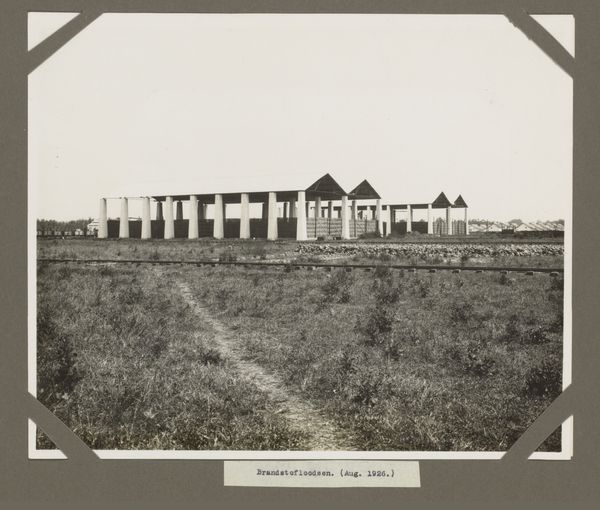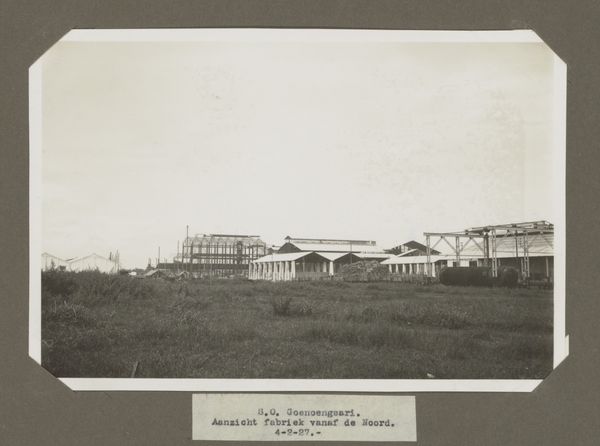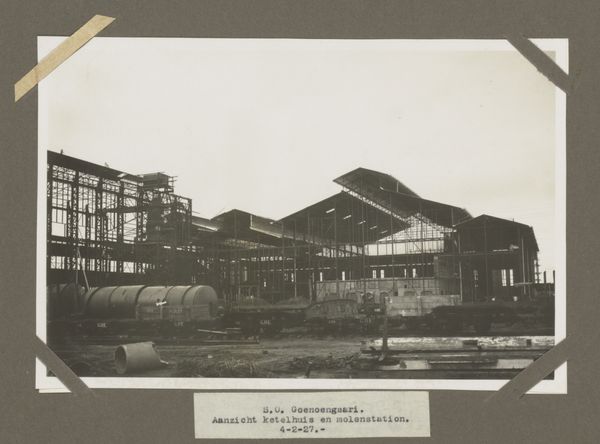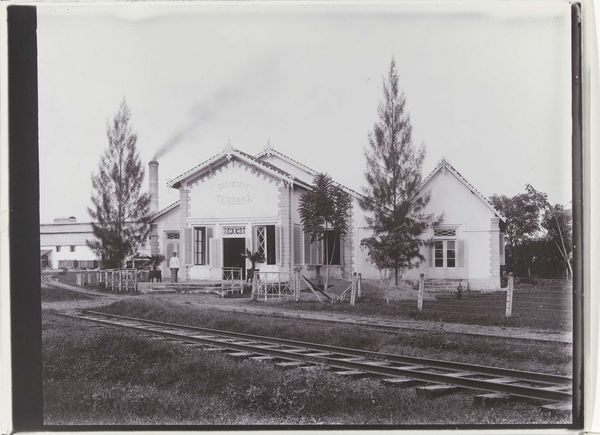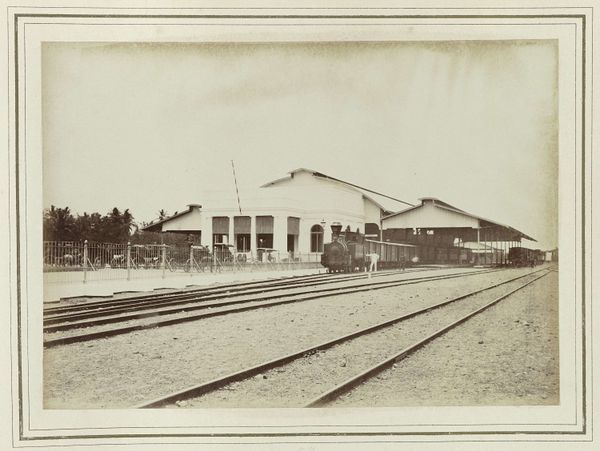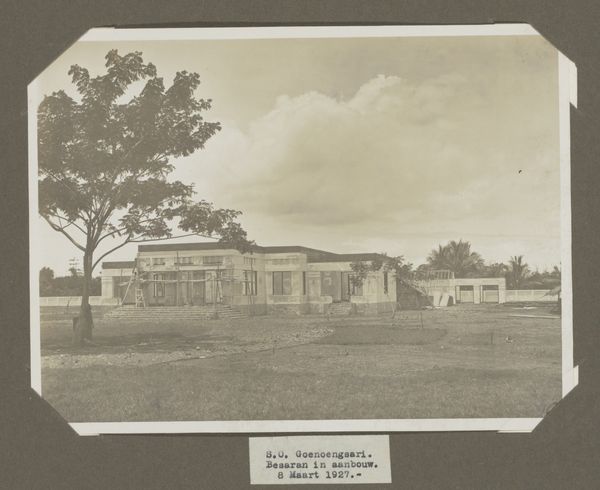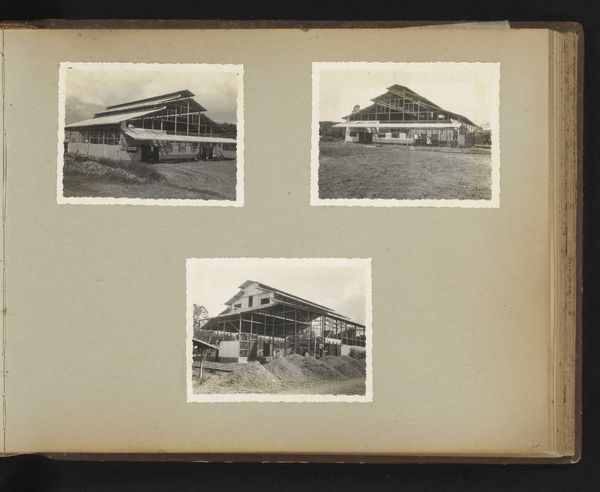
photography
#
landscape
#
photography
#
cityscape
Dimensions: height 85 mm, width 107 mm
Copyright: Rijks Museum: Open Domain
Curator: Here we have an image titled "Brandstofloodsen (Aug. 1926)" taken sometime between 1926 and 1928. It's an anonymous photograph residing here at the Rijksmuseum. Editor: Immediately, I feel this sort of desolate beauty. Those stark railway tracks converging, like veins leading to this almost skeletal structure in the distance...it’s industrial melancholy crystallized. Curator: That's an interesting take. Focusing on its materiality, it is fascinating to consider the paper and development processes employed. This photograph captures the infrastructure supporting industrial activities and consumption of resources, likely related to fuel or goods transportation. Editor: And yet, there's this surprising vulnerability to it, don't you think? The grayscale palette softens the impact, revealing texture like gentle ripples instead of hard edges. Curator: Yes, the limited tonal range definitely influences the perceived message. What the photograph omits is telling – what kind of labor constructed these fuel sheds, how are these spaces experienced and consumed daily? How are these photographs being made accessible to the masses? Editor: It's like looking at a forgotten monument, stripped of grandeur, yet imbued with a spectral narrative, don’t you agree? It speaks silently of both creation and oblivion. Curator: The act of recording these everyday spaces, through photography at this time, signifies a critical moment of looking, engaging in the modes of labor, and material flows of resources to maintain a growing modern state. The photo allows us to witness this evolution. Editor: For me, I can’t help but imagine the lives touched—shaped by these spaces and places and, ultimately, forgotten, leaving only faint ghostly afterimages...almost a visual echo of industry's relentless march. It has such haunting quietness. Curator: Indeed, it invites reflection. Appreciating this allows us to ask bigger questions about material culture and photographic means of production, in these overlooked, liminal places. Editor: Precisely. Thanks to the mechanical eye, we can reflect on how even seemingly mundane elements evoke surprising emotions and ask important social questions about our shared world.
Comments
No comments
Be the first to comment and join the conversation on the ultimate creative platform.
